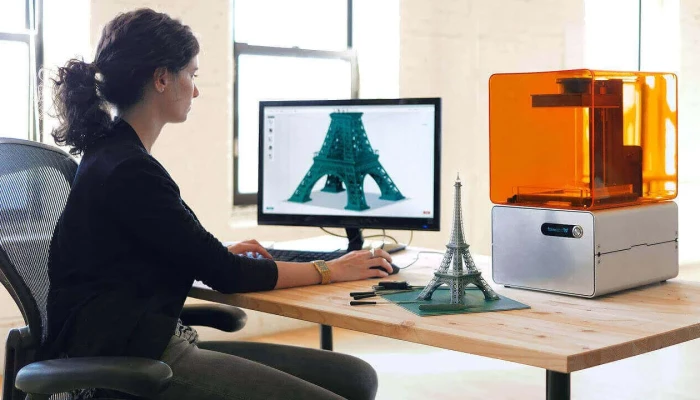Hello!
Have you ever wondered if there are other worlds just like ours? The idea of parallel quantum universes suggests that there could be countless versions of reality, all existing at the same time. Parallel quantum universes could be the key to unraveling mysteries about the universe and our place in it. This theory is fascinating because it challenges everything we think we know about existence.
The concept comes from the many-worlds interpretation of quantum mechanics. It proposes that every decision or event could lead to a branching of realities, creating new universes each time. Some scientists believe that this theory might offer a path to understanding not just the quantum world but also advanced technologies, like new types of quantum computers.
Exploring parallel universes isn't just science fiction—it's a field that draws serious study and debate. Though proving their existence remains a big hurdle, the potential discoveries are too exciting to ignore. Let's dive deeper into how these universes might work and what they mean for us.
Key Takeaways
- Parallel universes could unlock big mysteries about our reality.
- Each choice might create a new universe in the many-worlds theory.
- Proving parallel universes remains a big scientific challenge.
Parallel Quantum Universes Theory

Parallel Quantum Universes Theory is a fascinating idea that suggests many universes exist alongside our own. Each universe follows its own path and outcome, shaping reality in different ways. Let's dive into the key concepts, the link between quantum mechanics and parallel worlds, and the historical journey of this theory.
Conceptual Overview
Parallel Quantum Universes Theory proposes that our universe is just one of countless others. These universes exist as part of a vast multiverse, where each universe represents different possible outcomes. Think of it like a massive choose-your-own-adventure book, where every choice leads to a different storyline.
This theory gives us a new way to think about reality. Instead of being a single, unchanging entity, reality could be a dynamic and branching network of universes, each with its own set of rules and outcomes. The multiverse, as it's often called, opens doors to many possibilities and challenges our understanding of existence itself.
Quantum Mechanics and Parallelism
Quantum mechanics plays a big role in the idea of parallel universes. It introduces concepts like superposition and entanglement, which suggest that particles can exist in multiple states at once. This can lead to the possibility of parallel outcomes in different universes.
For example, the famous Schrödinger's cat thought experiment illustrates this idea. In one universe, the cat is alive; in another, it's dead. This example highlights how parallel quantum outcomes might unfold. Some scientists believe that these outcomes suggest the presence of many interacting universes.
Max Tegmark, a well-known physicist, identified various levels of parallel universes, including those where quantum events create different realities. These insights provide a framework for understanding how quantum mechanics might support the idea of parallel worlds.
Historical Development
The journey of parallel universe theory began with interpretations of quantum mechanics in the mid-20th century. Hugh Everett III introduced the idea of the "many-worlds interpretation" in the 1950s, suggesting that every quantum event spawns new universes. His ideas were revolutionary, although not immediately accepted.
Over time, interest in parallel universes grew as more scientists and writers explored their implications. The theory gained popularity in physics and sparked imaginations in science fiction as well. Today, it remains a lively field of study, with new discoveries and debates continuing to shape our understanding of reality.
Our journey through the Parallel Quantum Universes Theory reveals a universe full of fantastic possibilities and challenges. The theory encourages us to think beyond our single reality and consider what might lie beyond our perceptions.
Implications of Parallel Universes

Parallel universes spark excitement with their potential to reshape how we view reality. They challenge our deepest beliefs, offer breakthroughs in scientific research, and drive technological innovations.
Philosophical Impacts
The idea of parallel universes leads us to question the nature of existence and our place in reality. If countless versions of us exist, it alters our understanding of identity and choice.
We might wonder about our significance in such a vast multiverse. Are our decisions truly ours, or just one possibility among many?
This challenges the essence of free will and destiny, making us rethink concepts like fate and self. Some find this thrilling, while others might feel a sense of existential dread.
Scientific Possibilities
Parallel universes open fascinating doors in scientific research, particularly in quantum physics. The theory suggests that with every decision, universes split, creating new and diverse paths of reality.
This idea supports the quantum multiverse hypothesis, which can explain phenomena like the behavior of particles at subatomic levels.
Scientists explore how this could lead to solving mysteries of the universe, such as dark matter or quantum entanglement. The potential to test and expand these theories provides a thrilling frontier for scientific discovery.
Technological Advances
In the realm of technology, the idea of parallel universes provides a foundation for bold innovations. Quantum computing, for instance, might greatly benefit. A new kind of quantum computer could emerge from this theory, surpassing the limitations of our current technology.
Such advancements promise to revolutionize industries, enabling faster data processing and solving complex problems efficiently. This creates vast potential for growth and innovation in fields like cryptography, medicine, and artificial intelligence.
Pushing the boundaries of what's possible, this inspires us to dream bigger and imagine future tech shaped by these concepts.
Challenges in Proving Parallel Universes

Exploring the concept of parallel quantum universes is thrilling! There are tough challenges in proving their existence. Key issues include difficulties in translating complex mathematical theories into testable experiments and navigating intricate equations.
Experimental Limitations
It's fascinating but frustrating that we can't yet test the existence of parallel universes directly. Our current technology limits us because we can't observe other universes. Some theories suggest that these universes are inaccessible, hidden behind dimensions we can't reach. This makes experimentation challenging.
Scientists have developed indirect methods to search for signs of parallel universes. These include looking for cosmic microwave background anomalies or gravity waves. The thrill lies in hope that future advances might let us design experiments with more precise measurement tools. With each step, we get closer to the edge of discovery, dreaming of what it might reveal.
Mathematical Complexities
Oh, the math! It's both intriguing and mind-bending when it comes to parallel universes. We rely on abstract mathematical models to describe these ideas. Quantum mechanics equations, often filled with perplexing variables, serve as our guide. String theory and quantum field theory play significant roles here, offering frameworks that seem inspired by science fiction.
The complexity arises when trying to prove these models relate to reality. Calculations can spiral into infinity, leading us into paradoxes. That’s why developing consistent equations that accurately represent the universe is a daunting task. Yet, in overcoming these hurdles, we find joy in cracking the mysteries of the cosmos, one equation at a time.
Frequently Asked Questions

Parallel quantum universes open up mind-blowing ideas about the nature of reality. Let's explore how these concepts work and what they might mean for us.
How can we understand the concept of parallel quantum universes?
Parallel quantum universes suggest that our universe could be one of many. Each might have different outcomes from the same events. Think of it like a tree with many branches, each representing a different path taken by the universe. This theory challenges our ideas of fate and choice.
What distinguishes the parallel universe theory from the multiverse theory?
While they're often confused, parallel universe theory and multiverse theory aren't the same. Parallel universes are different realities that coexist with ours. The multiverse, however, includes all possible universes, which might have different laws of physics. It's like comparing a set of identical twins with a whole class of different students.
What did Stephen Hawking contribute to our understanding of parallel universes?
Stephen Hawking made significant contributions by exploring how quantum mechanics might allow for these alternate realities. His theories on black holes and the universe's origins suggest these universes could exist and influence our own. Hawking's work inspires us to think beyond the visible universe.
Can the many worlds theory be experimentally verified or falsified?
The many worlds theory is hard to prove because we can't observe other universes directly. However, some scientists believe future technology or experiments could offer glimpses into these parallel worlds. For now, it remains an exciting concept in quantum physics, sparking much debate and curiosity among researchers.
What implications do parallel universes have on the concept of reality?
If parallel universes exist, they challenge everything we know about reality. It raises questions about our decisions and their impact across multiple realities. It also forces us to reconsider what we see as real and whether our universe is unique or just one of many.
How does NASA's research contribute to the idea of parallel universes?
NASA investigates cosmic phenomena that might hint at parallel universes. By studying cosmic rays and other unusual signals, NASA scientists explore the boundaries of our universe. Their research could one day provide evidence supporting these fascinating theories, opening new doors to our understanding of space and time.
Thank you!
Join us on social media!
See you!






